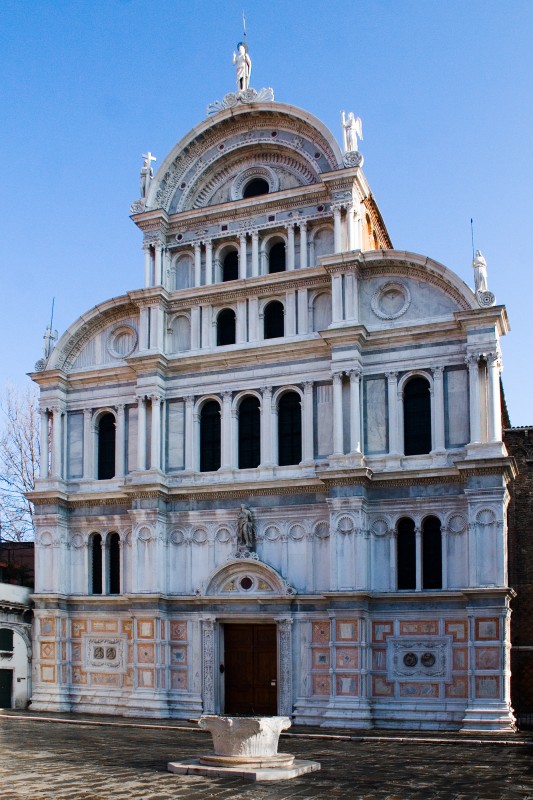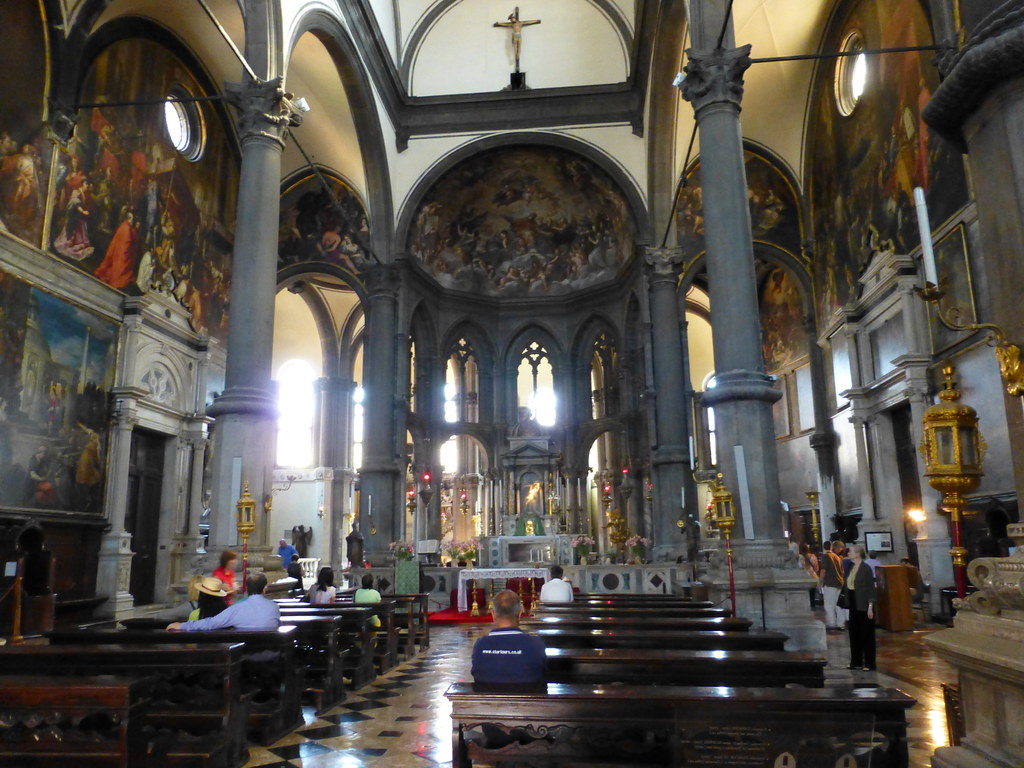The history of the Church of San Zaccaria

The Church of San Zaccaria between art and architecture

Beyond its important and prestigious history, the Church of San Zaccaria is also a monument capable of arousing emotions and satisfaction of an aesthetic nature. Its business card is certainly the facade: characterized by the candid white of the stone, it is tripartite by a series of twin columns, and "perforated" by high and slender windows that give momentum and rhythm to a rather full surface. A quarter of arches close the lateral bands, and a round arch as a frontispiece, richly decorated with sculptures and bas-reliefs, on the top of which the Saint's sculpture triumphs. The basement, on the other hand, is enriched with polychrome marbles that draw a regular and geometric pattern, perfect support for the momentum of the remaining part of the facade. The rear part is characterized by the presence of the high dome, one of the most emblematic signs of the Venetian skyline.
The interior has the space divided into 3 naves, as announced from the outside: the grey stone of columns and arches stands out against the white surfaces, while the back walls are wrapped in magnificent frescoes that captivate the eye.
But what are the main works of art that await you in your adventure in San Zaccaria?
First of all the eponymous altarpiece made in 1505 by Giovanni Bellini, one of the most important Venetian artists. The altarpiece of San Zaccaria, in fact, is one of the most important works of the History of Modern Art, celebrated in all the manuals of the discipline, a bridge between Piero della Francesca, Giorgione and Titian. To keep Giovanni Bellini company, another important author of the early Renaissance, Andrea del Castagno, author of the cycle of frescoes executed between 1442 and 1444 for the chapel of San Tarasio, the apse of the ancient church. From here it will be possible to access the crypt built between the tenth and eleventh centuries, a strenuous bastion of the ancient events of San Zaccaria.
Walking, then, between one burial of a doge and another, you will come across the tomb of the famous sculptor Alessandro Vittoria: a monument to himself, since it was the artist who executed it with his own hands before he died. Also of great interest is the chapel of Sant'Atanasio, an ancient nuns' choir, with the splendid Madonna and Child with Saints, created by Palma il Vecchio in 1512. And for Baroque lovers there are the lunettes made at the end of the 17th century by a series of artists, including Antonio Zanchi, Andrea Celesti and Giovanni Antonio Fumiani to name but a few. This is where your visit ends: with the mythical tale of the events of San Zaccaria, seen through the eyes and colours of Giambattista Tiepolo's forerunners.
The Church of San Zaccaria is located in Campo San Zaccaria, in the Sestiere di Castello and respects the following visiting hours:
- from Monday to Saturday from 10:00 a.m. to 12:00 noon and from 4:00 p.m. to 6:00 p.m.
- on Sundays from 16:00 to 18:00










Lascia un commento